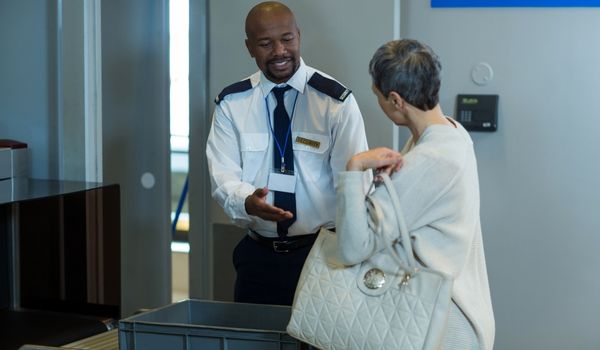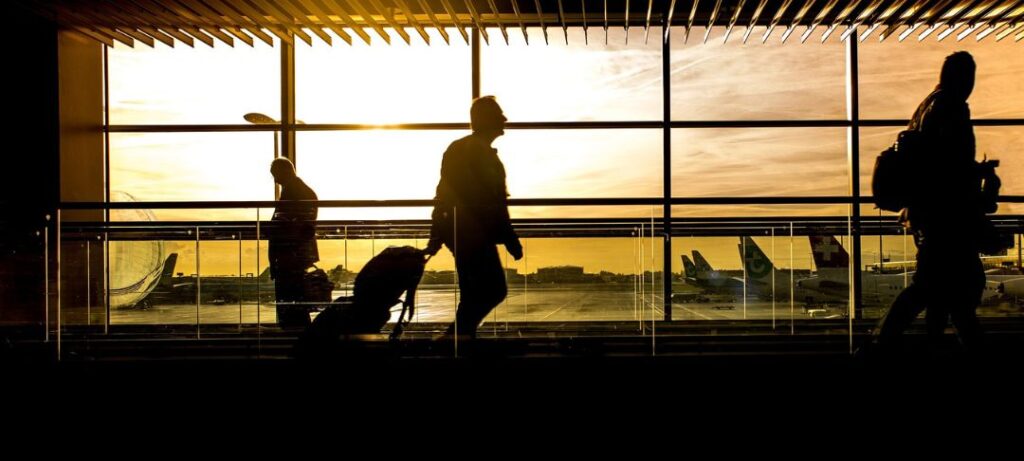Traveling by air can be a convenient and exciting experience, especially when you have a connecting flight. But what exactly is a connecting flight, and why is it important to understand what it is? In this blog post, we’ll explore everything you need to know about connecting flights, including what they are, the advantages and disadvantages of taking them, how to handle them, and much more. Whether you’re a seasoned traveler or a first-time flier, this comprehensive guide will help you make the most of your connecting flight experience.
What is a Connecting Flight?
A connecting flight is a type of air travel that involves a stopover at an intermediate airport en route to the final destination. The purpose of a connecting flight is to allow travelers to reach their final destination by connecting two or more flights. When booking a connecting flight, you’ll typically fly from one airport to another, with a brief layover in the middle to change planes and continue your journey. Connecting flights can be either domestic or international, depending on the route and the airlines involved.
Connecting flights offer a cost-effective way to travel to multiple destinations, as well as a broader range of flight options and more convenient itineraries. For example, a traveler may need to fly from New York to Los Angeles but may prefer to fly through Chicago to take advantage of lower airfares. This type of travel requires careful planning, as travelers must navigate the airport, do security checks, and customs, and must ensure that they have enough time to make their connecting flight.
Advantages of Connecting Flights
Connecting flights offers a number of benefits for travelers. One of the biggest advantages is cost savings. By taking a connecting flight, travelers can often find lower airfares than if they were to fly directly to their final destination. Connecting flights also offer a wider range of destinations, as they allow travelers to fly to cities that might not have direct flights available. This is especially beneficial for travelers who are looking to reach remote or less popular destinations.
Another advantage of connecting flights is that they offer more convenient itineraries. By flying with a connecting flight, travelers can often find flights that better suit their schedules and needs. For example, a traveler may be able to fly from New York to Paris with a connecting flight in London, rather than flying directly from New York to Paris. This can be especially useful for travelers who are looking to take advantage of business opportunities or to visit friends and family.
Finally, connecting flights can also offer a more comfortable travel experience. By breaking up a long journey into two or shorter flights, travelers can avoid the discomfort and stress of flying for long periods of time. This can also help to reduce the risk of jet lag and other travel-related issues, making the entire travel experience more enjoyable and less fatiguing.
Disadvantages of Connecting Flights
Despite the many advantages of connecting flights, there are also several disadvantages to consider. One of the biggest disadvantages is the increased travel time. Travelers must plan for longer travel time, as they must allow time for the layover and the time it takes to navigate the airport. This can be especially challenging for travelers who are short on time or who have tight schedules.
Another disadvantage of connecting flights is the risk of missed connections. If a traveler misses a connecting flight, they may be delayed for several hours or even forced to spend the night at the airport. This can be stressful and inconvenient, and can also impact the traveler’s itinerary and plans.
Finally, connecting flights can also be more stressful and inconvenient than direct flights. Travelers must navigate the airport, security checks, and customs, and ensure they have enough time to make their connecting flight. This can be especially challenging for travelers who are unfamiliar with the airport or who are traveling with large amounts of luggage. Additionally, there may be added stress and uncertainty about making it to the next flight on time, especially if there are delays or unexpected circumstances.
Choosing the Right Connecting Flight

Alt Text: Baggage scanning at an airport
Choosing the right connecting flight is crucial to having a smooth and stress-free travel experience. There are several factors to consider when selecting a connecting flight, including the duration of the layover, the airport facilities, the location of the connecting airport, and the airline’s reputation for punctuality and reliability.
The duration of the layover is one of the most important considerations when choosing a connecting flight. A long layover can be tedious and inconvenient, especially if there are limited airport facilities or if the connecting airport is located far from the city center. On the other hand, a short layover can be stressful and increase the risk of missing a connecting flight, especially if there are security or customs delays. It’s recommended to choose a layover that is at least an hour and a half to two hours long, to allow enough time for security checks and to navigate the airport.
The airport facilities are another important factor to consider when choosing a connecting flight. Some airports have a wide range of facilities, including lounges, dining options, shopping, and entertainment, while others may have limited options. If you have a long layover, it’s important to choose an airport with good facilities to help make the most of your time.
The location of the connecting airport is also an important consideration. Some airports are located far from the city center, making it difficult or expensive to reach the city. It’s important to research the location of the connecting airport, as well as the availability of transportation options to and from the airport, to ensure that you can make the most of your layover.
Finally, it’s important to consider the airline’s reputation for punctuality and reliability when choosing a connecting flight. Some airlines are known for having a high number of delays and cancellations, which can increase the risk of missing a connecting flight. It’s important to choose an airline with a good reputation for punctuality and reliability, to ensure that your connecting flight experience is as smooth and stress-free as possible.
How to Handle a Missed Connection
Dealing with a missed connection can be stressful and disruptive to your travel plans, but there are several steps you can take to minimize the impact. If you miss a connecting flight, the first thing you should do is contact the airline. The airline may be able to rebook you on another flight, or they may offer alternative travel arrangements, such as a hotel or a meal voucher.
It’s also important to stay calm and remain patient. The airline may be dealing with a large number of passengers who have missed their connections, so it may take some time to get a resolution. Be polite and understanding, and try to be as flexible as possible with your travel plans.
If the airline is unable to rebook you on another flight, it’s important to consider alternative travel options, such as taking a train or renting a car. Keep in mind that these options may be more expensive or time-consuming, but they may be necessary if you need to reach your destination as soon as possible.
It’s also important to be prepared for unexpected expenses, such as meals, hotel stays, and transportation costs, in the event of a missed connection. Make sure to carry some emergency funds and to keep important documents, such as your passport and travel insurance, with you at all times.
Preparing for a Connecting Flight
Preparing for a connecting flight can help ensure a smooth and stress-free travel experience. There are several steps you can take to prepare for your connecting flight, including researching the connecting airport, packing appropriately, and being mindful of your time.
One of the most important things to do when preparing for a connecting flight is to research the connecting airport. Familiarize yourself with the layout of the airport, including the location of security checks, customs, and baggage claim, as well as the available facilities and transportation options. This information can help you navigate the airport with confidence and make the most of your layover.
Another important aspect of preparing for a connecting flight is packing appropriately. Make sure to pack light and only bring what you need for the journey. Consider bringing a carry-on bag with essential items, such as snacks, water, and a book, to make the most of your layover. Additionally, it’s important to pack any necessary medications, travel documents, and valuables in your carry-on bag, in case your checked luggage is delayed or lost.
Finally, be mindful of your time when preparing for a connecting flight. Allow plenty of time for security checks, customs, and baggage claims, and make sure to leave enough time to get to your gate before your next flight. It’s recommended to arrive at the airport at least two hours before your flight, to ensure that you have enough time to navigate the airport and board your next flight without stress.
By researching the connecting airport, packing appropriately, and being mindful of your time, you can prepare for a connecting flight with confidence and make the most of your travel experience. So, whether you’re a seasoned traveler or a first-time flier, these tips can help you navigate the world of connecting flights with ease and make the most of your journey.
Conclusion
In conclusion, connecting flights can be a cost-effective, convenient, and comfortable way to travel, but they also come with a number of potential disadvantages. By understanding what connecting flights are, the advantages and disadvantages of taking them, and how to handle them, travelers can make informed decisions about their travel plans and make the most of their connecting flight experience. Whether you’re a seasoned traveler or a first-time flier, this comprehensive guide will help you navigate the world of connecting flights with confidence and ease. So, pack your bags, and get ready to explore the world through the lens of a connecting flight.
